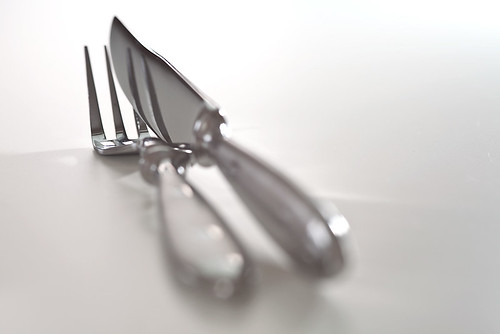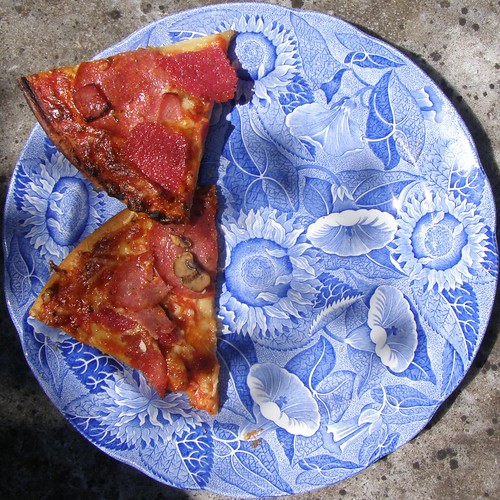Ever tasted a white yoghurt from a white spoon and thought it tasted particularly sweet? Probably not. But nevertheless, new research suggests that the way we see colours of cutlery and crockery could affect the way we perceive food.
According to research conducted at Oxford University, volunteers who tasted food with a utensil of a contrasting colour found it more delicious. When offered a pink yoghurt to eat with a black spoon, they much preferred the flavour to when eaten off a white spoon. In addition, it seems as though the key to healthy eating is to have no cutlery surprises. The cutlery should weigh and feel as you expect it to when you see it (i.e. plastic forks should be lightweight and metal forks heavy) because this, according to researchers, makes the food taste more expensive.
Similarly, the size and colour of the plate it’s served on could help us to feel more full. Have you ever been to a restaurant and been presented with an enormous pile of food served on a tiny plate and felt as though you can’t finish it? Well, according to research, if this amount of food was served on a larger plate, you might see it as a smaller portion. This, researchers suggest, is all down to the plate size tricking the brain into perceiving the food differently.
The plate colour could also make a difference. As blue is the least common food colour (can you think of anything other than blueberries…?), when food is viewed on a blue plate, it is presented in the least appealing way. When our eyes see blue, the optic nerve sends a message to the brain, which then decides it’s not something we want to eat. Japanese scientists even went so far as to design blue tinted glasses lenses to give every meal an unappetising blue tinge. This also acts as the ‘unpleasant surprise’ factor during a meal because food doesn’t appear as it should. Remember when Heinz released a green version of their Tomato Ketchup? It was the same ingredients but just didn’t taste the same somehow. Not surprisingly, the green ketchup ceased production not long after its release.
But it’s not just your cutlery and crockery affecting your appetite. The University of Manchester discovered that the overall dining atmosphere could impact your perception of flavour intensity. In a dining room with loud background noise such as loud music or other diners, you are less likely to notice the flavours of food.
So, looking at the research overall, the ultimate dining setting for weight loss should be as follows:
Blue plates (blue is believed to be the least appetising colour)
Small plates (this tricks the brain into seeing more food and feeling more satisfied, thus helping with portion control)
Normal weight cutlery (plastic = lightweight, metal = heavier)
No distracting background noise (this affects your taste sensitivity)
All of these factors demonstrate that the whole eating process and presentation affects our appetites. From visually seeing the food, to hearing the surroundings, to tasting the flavours; it all makes a difference. So it appears it’s not just taste which affects the way we eat. If you’re battling to lose weight, understanding how sight will change the way you see your food could be the key.
Featured images:
 License: Creative Commons image source
License: Creative Commons image source License: Creative Commons image source
License: Creative Commons image source
Victoria is fascinated by how the mind works. Here, she researches the links between eyesight and diet for a geek glasses retailer, Directsight.co.uk.


